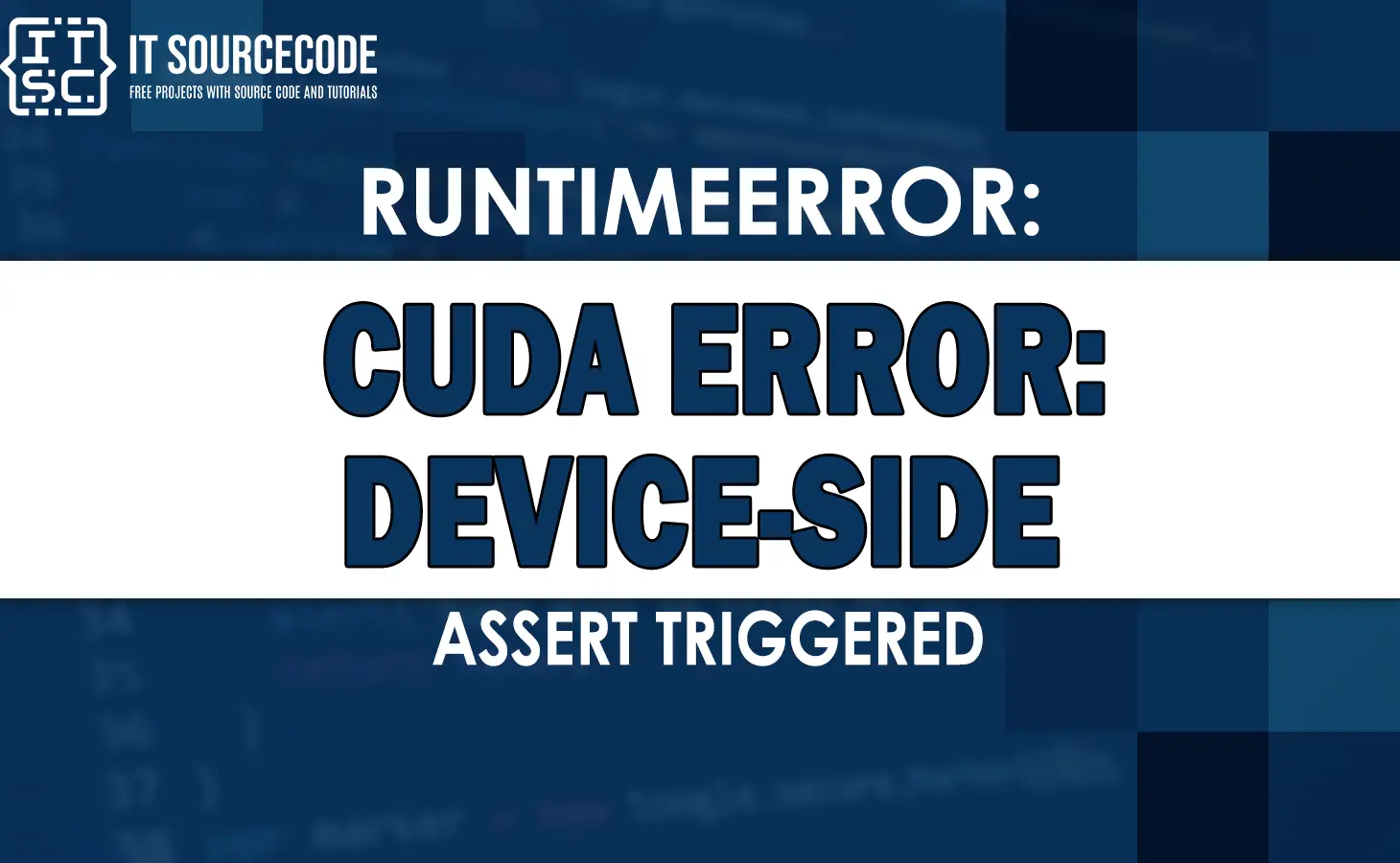If you are encountering this error Runtimeerror: cuda error: device-side assert triggered. You will already know how frustrating it can be.
The most confusing part for me have no clear, step-by-step methods for this problem. This might due to the case that PyTorch is approximately new.
What Causes a CUDA Error: Device-Side Assert Triggered?
Here are the two causes of how the CUDA error occurs:
- It has the difference between the number of labels/classes and the number of output units
- The input of the loss function should be incorrect.
Read Also: typeerror cannot read property ‘replace’ of undefined
How to Fix this Error cuda error: device-side assert triggered?
You will ensure that the number of output units should match the number of your classes. Which is to required to modify the classifier to be as follows:
For example:
import torch.nn as nn
# Define classifier as a sequential model
classifier = nn.Sequential(
nn.Linear(2048, 700),
nn.ReLU(),
nn.Dropout(p=0.2),
nn.Linear(700, 300),
nn.ReLU(),
nn.Dropout(p=0.2),
nn.Linear(300, 196),
nn.LogSoftmax(dim=1)
)
# Set the classifier as the last fully connected layer of the model
model.fc = classifier
The following example code on how you get the number of classes in your data set:
len(dataset.classes)Incorrect Input For The Loss Function
Loss functions have various ranges for the provable inputs that it will be accepted. If you choose an inconsistent activation function for your output layer, it will cause this error.
How to Solve a CUDA Error: Device-Side Assert Triggered in PyTorch?
We will ensure that our output layer will return values in the range of the loss function (criterion) that we determine.
This involves using the correct activation function (sigmoid, softmax, LogSoftmax) in our final output layer.
For example:
import torch
import torch.nn as nn
# Define the model
model = nn.Linear(2, 1)
# Generate some input data
input = torch.randn(128, 2)
# Pass the input through the model to get the output
output = model(input)
# Generate some target data for the loss function
target = torch.empty(128).random_(2)
# Define the loss function
criterion = nn.BCELoss()
# Calculate the loss
loss = criterion(output, target)
In this example, it will trigger a CUDA runtime error 59 if you’re using a GPU. We can solve it by passing our output through the sigmoid function or with the use of BCEWithLogitsLoss().
Method 1: Passing the Results to the Sigmoid Function
The first method to resolve the error CUDA Error Device-Side Assert Triggered in PyTorch, we need to pass the results to the sigmoid function.
For example:
import torch
import torch.nn as nn
# Define the model
model = nn.Linear(2, 1)
sigmoid = nn.Sigmoid()
model = nn.Sequential(model, sigmoid)
# Generate some input data
input = torch.randn(128, 2)
# Pass the input through the model to get the output
output = model(input)
# Generate some target data for the loss function
target = torch.empty(128).random_(2)
# Define the loss function
criterion = nn.BCELoss()
# Calculate the loss
loss = criterion(output, target)
Method 2: By Using BCEWITHLOGITSLOSS() Function
The second method to resolve the error CUDA Error: Device-Side Assert Triggered in PyTorch, through using BCEWITHLOGITSLOSS() Function.
For example:
import torch
import torch.nn as nn
# Define the model
model = nn.Linear(2, 1)
# Generate some input data
input = torch.randn(128, 2)
# Pass the input through the model to get the output
output = model(input)
# Define the loss function
criterion = nn.BCEWithLogitsLoss()
# Generate some target data for the loss function
target = torch.empty(128).random_(2)
# Calculate the loss
loss = criterion(output, target)
How to Fix CUDA Error: Device-Side Assert Triggered on Kaggle?
If the error is triggered, you will not be able to continue to use your GPU. Regardless of that after you modify the problematic line and reload the entire kernel.
You will still encounter the error presented in various forms. The form varies on which line is the first one to try to use the GPU.
Solution for Fixing the Error
You need to stop your current kernel session and start with a new one.
Here are the following steps to fix the error:
- First, to access your kernel, click the ‘K’ in the top left corner. You are immediately directed to your kernels.
- Next, you will be able to see a list of your kernels, that has an edit option and additional stop for the ones currently running.
- Then, Click “Stop kernel.”
- Finally, you need to restart your kernel session fresh. Each variable will be reset, and you must have a brand new GPU session.
Conclusion
In conclusion, we discussed the causes and what CUDA means, and also we provide you the solutions to solve the error Runtimeerror: cuda error: device-side assert triggered.
FAQs
Activation loss functions are mathematical functions used in machine learning to measure the difference between the predicted output of a neural network and the actual output.
“Runtimeerror: cuda error: device-side assert triggered” is an error message that typically occurs if you’re using Nvidia’s CUDA programming language.
This error message shows that a device-side assertion has failed, which means there is an issue with the GPU or the CUDA code.

